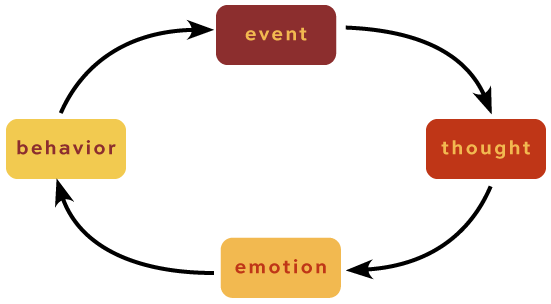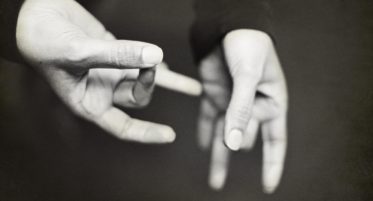
Prompt Images
{Restarting} the Loop: Understanding the Circular Nature of Time and Change
Generally we think of time as being linear: We begin at one place and progress forward, perpetually leaving the past behind and stepping into the future. In one way this is absolutely true. However, it doesn’t capture the whole story.
Time can be linear, but at the same time, it can be circular.
Consider this: We start every year in January, then progress to February, March… all the way through to December. The circle closes, and we repeat from the beginning. So even though we feel like we are moving forward through time, we are at the same time moving around it.
The beauty in this circular system is that it regularly gives us opportunities to begin again. The calendar flips back to January and we get another chance, another clean slate, another fresh opportunity. An opportunity to progress forward as we also move around.
When the loop restarts, often we feel compelled to change something this next time around: to improve ourselves, to become a better version of what we were last time around. Often we focus on some kind of behavior change: to eat healthier, spend less, drink less, connect with friends more.
However, I learned something crucial last year, and I’m going to let you in on the secret: changing a behavior is like treating a symptom when you’re sick.
The symptom is not the real problem; it is just a symptom, and the problem will still be there even if the symptom goes away.
This is because the symptom/behavior is a later stage in a circular progression; if you try to change a late stage, the beginning stages are still present and will often drive the same outcome or behavior.
So, to change a behavior, you need to step backward through the process and figure out what set it off in the first place.
Behavior is not directly driven by an event or situation. In other words, you don’t immediately jump into a reaction or behavior in response to a certain event. (It may feel this way, however, because a lot of the in-between processes can be unconscious.) Instead, there are two steps between the event and the behavior. When an event occurs, your brain immediately (and often unconsciously) has thoughts about it. These thoughts then produce emotions, and it’s the emotions that then trigger behavior. And behavior, of course, often causes a new event or situation.
If you try to change the behavior without addressing the underlying thoughts and emotions, you will not succeed in making permanent change.
This is because the thoughts and emotions are still the same and will put pressure on you to perform the same behavior.
Say, for instance, your co-worker Carol keeps a jar of candy on her desk by the entrance to your office. You are resolving to eat healthier this year, which you have decided means cutting out candy. You feel strong and motivated. You walk by her desk the first week and deliberately ignore the candy. The second week, however, your motivation begins to flag. You can smell the chocolate and your cravings are kicking in hard. By the third week, you tell yourself you’ve been doing such a good job and one (or a few) won’t hurt. And you kind of forget how urgent this healthy eating thing was to you. It’s friggin’ HARD. So, you give in. And after you give in, you feel guilty and the guilt encourages you to give up, and before you know it you are right back to the old behavior.
However, now that you understand this process, you can back up from behavior, past the emotion to the thought, and consciously examine what’s going on here.
By bringing your thoughts forward from subconscious to conscious, you are likely to have more success.
What are you actually thinking when you walk by Carol’s candy dish? Are you thinking about how much you want the candy, but you can’t have it? That might trigger emotions of frustration and anger, which will make it hard to follow through with your desired behavior. Or maybe you’re thinking, “Dammit, Carol, why do you always have to have candy out?” which might make you feel resentful and also angry, and could lead you to behave in ways that might damage your relationship with Carol, which could also make you feel guilty, or regretful. Guilt is an uncomfortable emotion that may be difficult for you to tolerate or process, lowering your ability to follow through on the desired behavior.
Or maybe you walk past the candy dish and smell the chocolate, which reminds you of Halloween when you were a kid, and that time you and your best friend dressed up as M&M’S, and how much fun you had, which triggers happiness and nostalgia and yet another craving for candy and reliving those happy memories, also making it difficult to follow through with your desired behavior.
Is the relationship here becoming clear?
The first step to changing a behavior is to become aware of the thoughts around it, and what kind of emotions your thinking produces.
Behavior is driven by emotion, so if we can change the thoughts we can influence the emotions, and different emotions will generate different behaviors.
What if, when you walk by the candy dish, you stop to fully listen to all the thoughts that come up in your head? Then, you consciously reprogram those thoughts into something that will better serve the end you desire? Say you walk by and tell yourself how glad you are that you’re eating healthier, that you’re starting to feel better already, and you are really looking forward to increased health and productivity. Thoughts like these might trigger happiness, anticipation, pride, and resolve, lowering the desire for candy and making the behavior of avoiding the candy much easier to execute!
This kind of thinking also moves the problem from an immediate urgency to a long-term, goal-oriented view. By understanding your goals and bringing your thinking forward from subconscious to conscious, you are now able to affect your thinking in such a way to manipulate your emotions, producing behavior aligned with your goals, increasing your chances of success.
Change your thinking, and you can change anything! In our thoughts lie our power.




